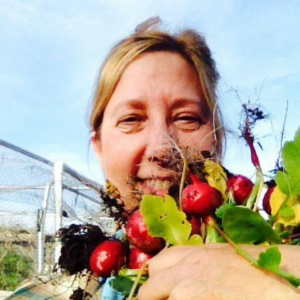Your Garden . . . with Sharon McCray: Make sure your soil has the correct pH to ensure healthy gardens
One issue about soil that many gardeners fail to recognize is pH. Santa Clara Valley soils are predominantly alkaline, that is, a pH of 7.2 or higher.
![]()
By Sharon McCray

Sharon McCray
Soil, please don’t call it dirt. Dirt is something either swept under a rug or is lodged under my fingernails. Healthy soil is alive and contains billions of microbes and microscopic life that supports plant life. It needs water and organic material to thrive.
We are blessed that our local soils have sufficient amounts of minerals to feed most anything we try to grow. There are, however, other issues that will affect the plants ability to take up the needed nutrients. Take a handful of your soil and give it a good squeeze: if water drips out, it is too wet to plant. Soil temperature is also important. Most of our tender seedlings won’t grow until the soil reaches 55 degrees.
Since there are few local places to have your soil tested, I urge you to perform a few simple tests to check the health of your soil. Weeds — I know, not a good place to start, but if both broad leaf (dandelions) and thin leaved (grass) weeds are growing, it is safe to say your soil is relatively healthy.
 If the ground seems compacted with nothing growing, scatter a few radish seeds, which germinate fairly fast and water as needed. If they fail to sprout within two weeks, there is an issue, perhaps chemicals or other problems.
If the ground seems compacted with nothing growing, scatter a few radish seeds, which germinate fairly fast and water as needed. If they fail to sprout within two weeks, there is an issue, perhaps chemicals or other problems.
One issue about soil that many gardeners fail to recognize is pH. Santa Clara Valley soils are predominantly alkaline, that is, a pH of 7.2 or higher. This is important to know because soil with a high pH will bind certain minerals in the soil, never allowing them to be available to the plants.
If you ever wonder why your citrus leaves look yellow, it is usually deficiency of iron that is locked up in the soil. Camellias and other “acid” loving plants (7 pH and less) do not like our alkaline soils. Inexpensive pH test kits are available at most garden centers. Your water’s pH can affect the results of the test.
 You can feed your plants all day long, but unless the pH changes, the benefits of the fertilizer will be nil. This is why I recommend spraying a good iron fertilizer directly on the plant leaves.
You can feed your plants all day long, but unless the pH changes, the benefits of the fertilizer will be nil. This is why I recommend spraying a good iron fertilizer directly on the plant leaves.
This method of applying fertilizer is called “foliar” feeding. As with all fertilizers, I recommend that the concentration as recommended by the fertilizer company be reduced by one half and applied twice as often. Remember, the fertilizer company is trying to sell a product.
Understanding fertilizer is easier because labeling standards have been developed to make it simpler for consumers to make informed decisions regarding what to buy. The three numbers shown on fertilizer packages indicate content by weight. They are from left to right: Nitrogen, Phosphorus and Potassium (NPK). Nitrogen is essential for healthy plant growth, leaves and foliage. Phosphorus helps with fruit and flower production, root storage and plant vigor and strength. Potassium, aka potash, helps support good root growth, encourages drought and cold tolerance.
Therefore, if a fertilizer reads 10-15-10 it is 10 percent N, 15 percent P and 10 percent K and totals 35 percent by weight of the total weight of the product. The remainder of the contents are inert carriers.
I hope I haven’t overwhelmed you with all this soil talk. Start with the Soil by Grace Gershuny is without a doubt the best reference book and the only book in my library I won’t loan. Weather this year continues to be unpredictable. I’m beginning to feel like a hibernating bear with sleep apnea — I keep waking up wondering if it is spring yet.
Sharon McCray is a California native living in Santa Clara County since 1959. She became certified as a University of California cooperative extension master gardener in 1992 and a UCCE master naturalist in 2015. She hosts a monthly radio show on KKUP public radio and is now retired.
